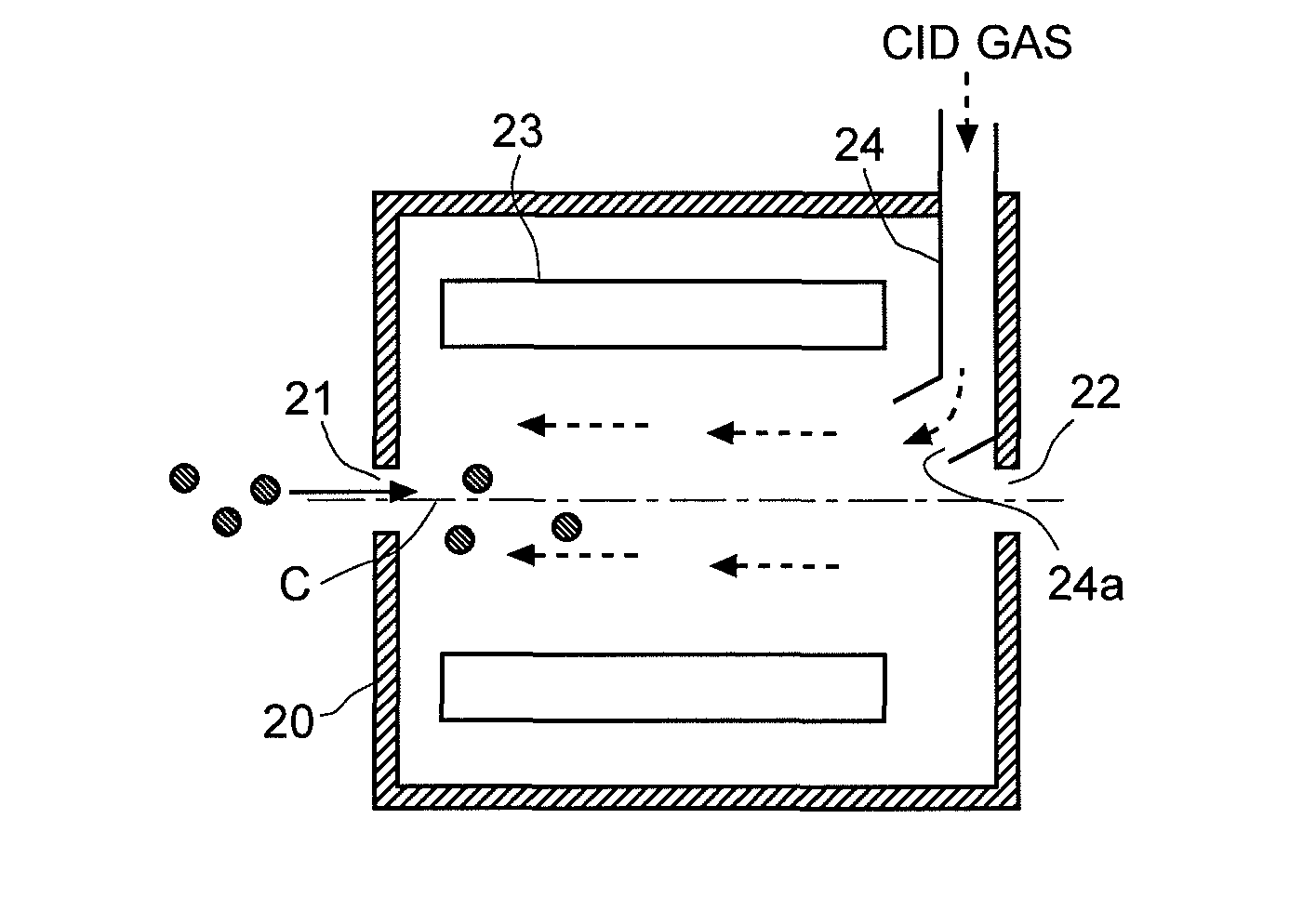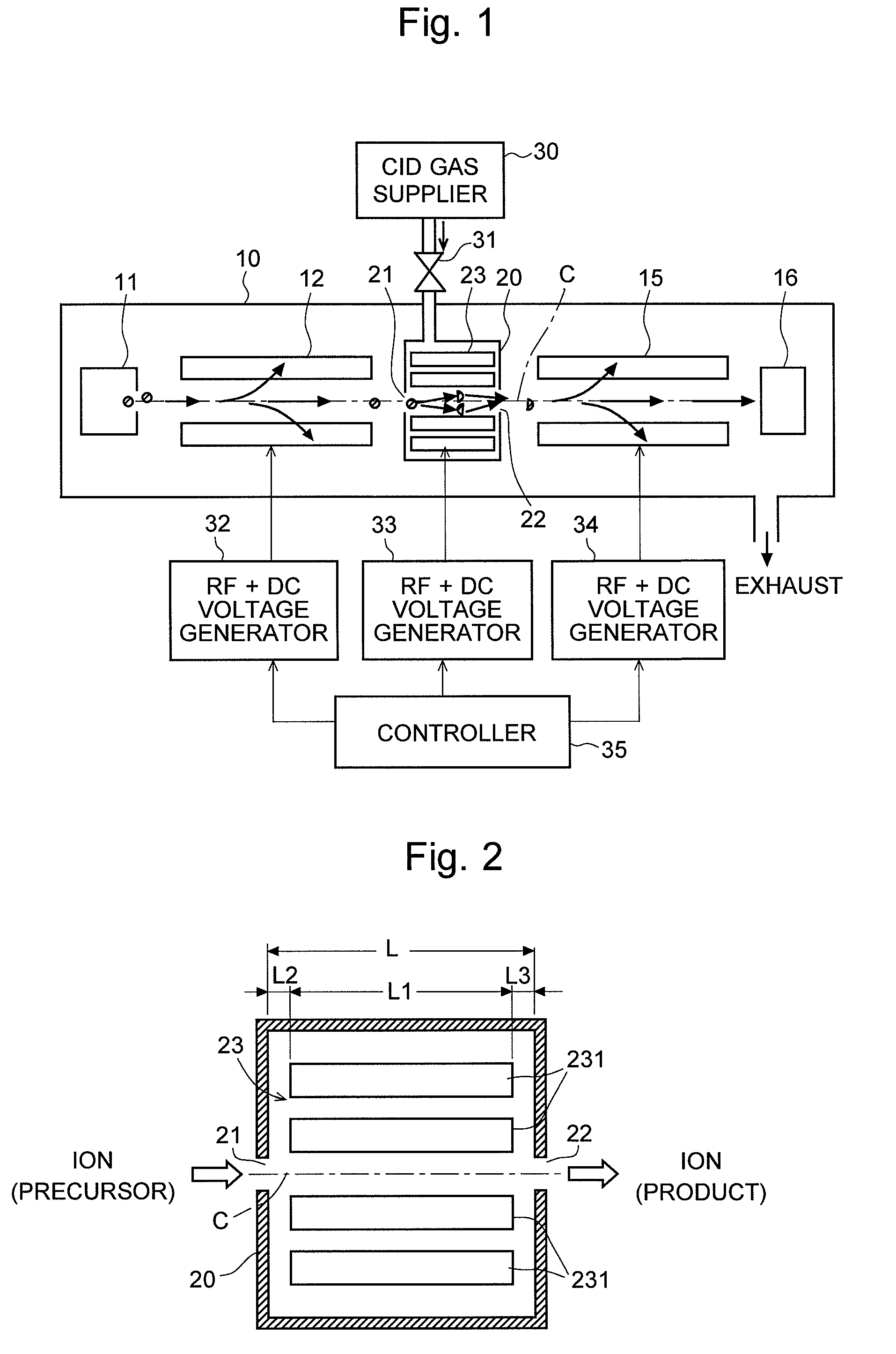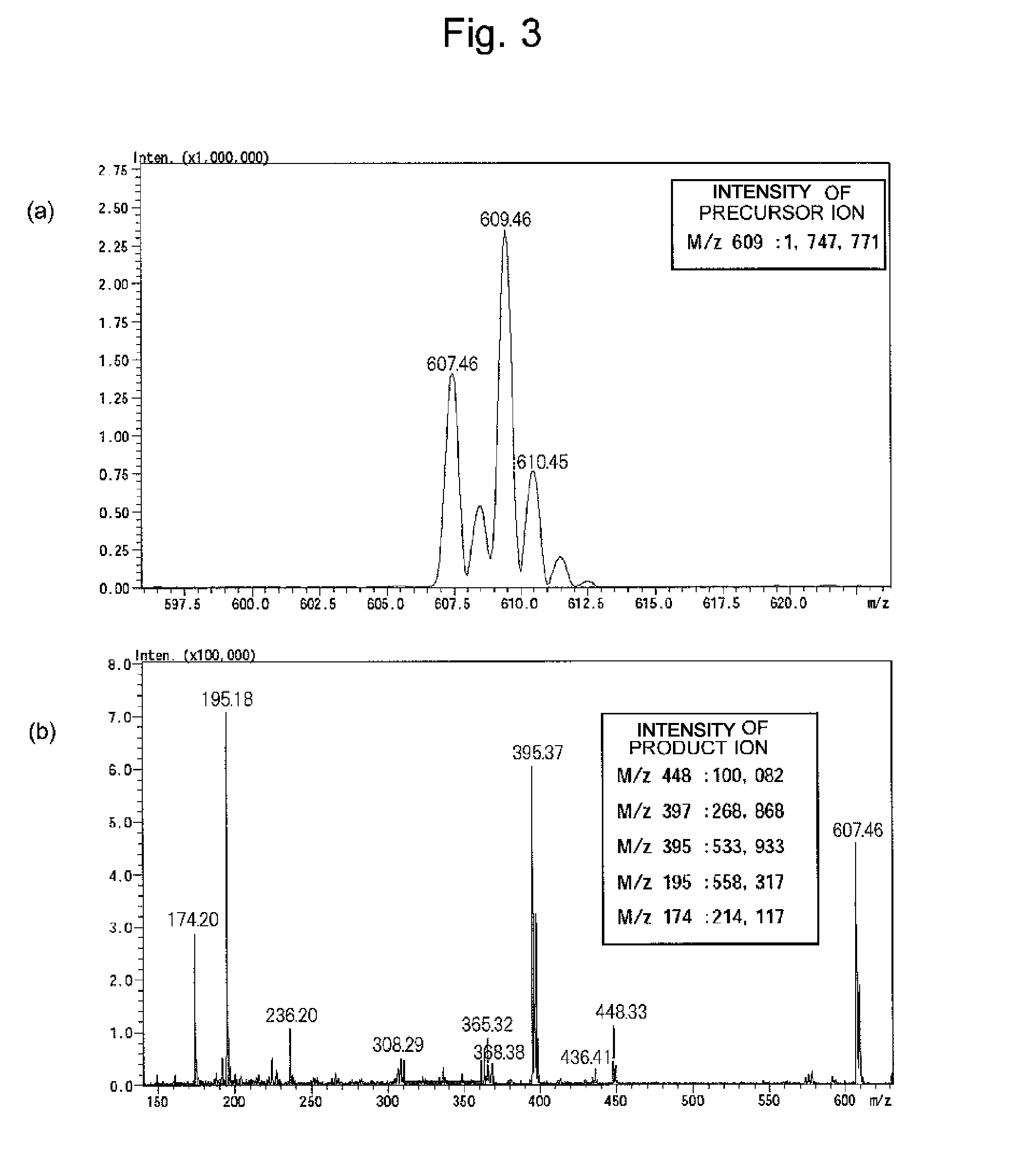Collision cell for an MS/MS mass spectrometer
a mass spectrometer and collision cell technology, applied in the field of ms/ms mass spectrometer, can solve the problems of omission of analysis information in multi-component analysis, degradation of detection sensitivity, and inability to detect ion b>14/b>, and achieve sufficient cid efficiency, short flight time, and the effect of reducing the time interval for repeated analysis tasks
- Summary
- Abstract
- Description
- Claims
- Application Information
AI Technical Summary
Benefits of technology
Problems solved by technology
Method used
Image
Examples
first embodiment
[0053]An MS / MS mass spectrometer which is an embodiment (or the first embodiment) of the present invention will be described with reference to the figures. FIG. 1 is an overall configuration diagram of the MS / MS mass spectrometer according to the first embodiment, and FIG. 2 is a detailed sectional view of a collision cell in the MS / MS mass spectrometer of the first embodiment. The same components as in the conventional configuration as illustrated in FIG. 15 are indicated with the same numerals and the detailed explanations are omitted.
[0054]In the MS / MS mass spectrometer of the first embodiment, as in a conventional configuration, a collision cell 20 is provided between the first-stage quadrupole electrodes 12 (which correspond to the first mass separator in the present invention) and the third-stage quadrupole electrodes 15 (which correspond to the second mass separator in the present invention) in order to generate a variety of product ions by dissociating a precursor ion. This ...
second embodiment
[0072]An MS / MS mass spectrometer which is another embodiment (or the second embodiment) of the present invention will be described with reference to the figures. The spectrometer in the second embodiment is almost the same as that in the first embodiment and only a portion of the collision cell's configuration is different. This configuration will be described with reference to FIG. 4.
[0073]As illustrated in FIG. 4, in the collision cell 20 in this embodiment, the gas ejection port 24a of the supply pipe 24 for supplying the CID gas is curved in the anterior direction. Accordingly, the CID gas spouted into the collision cell 20 from the gas ejection port 24a proceeds in the opposite direction of the ion's traveling direction, as indicated by the dashed arrows in the figure. Therefore, compared to the configuration of the first embodiment, ions introduced into the collision cell 20 collide with a CID gas having a larger energy, which enhances the efficiency of the dissociation. Hence...
modification example
[0074]The configuration of the electrode for forming a radio-frequency electric field disposed in the collision cell 20 is not limited to the octapole electrodes as in the aforementioned embodiments, but can be modified in a variety of ways including various types of conventionally known configurations. Concretely speaking, multipole electrodes may be used such as quadrupole electrodes and hexapole electrodes, other than octapole electrodes. With such a simple multipole configuration, a constant direct current electric field is formed in the direction of the ion optical axis C. Since the collision cell is short, it is possible to make an ion pass through the collision cell in a short period of time even with a constant direct current electric field.
[0075]Electrodes having a different configuration as illustrated in FIGS. 5 through 12 may be used. With each of these modifications, a direct current having a potential gradient in the direction along the ion optical axis C is formed and...
PUM
 Login to View More
Login to View More Abstract
Description
Claims
Application Information
 Login to View More
Login to View More - R&D
- Intellectual Property
- Life Sciences
- Materials
- Tech Scout
- Unparalleled Data Quality
- Higher Quality Content
- 60% Fewer Hallucinations
Browse by: Latest US Patents, China's latest patents, Technical Efficacy Thesaurus, Application Domain, Technology Topic, Popular Technical Reports.
© 2025 PatSnap. All rights reserved.Legal|Privacy policy|Modern Slavery Act Transparency Statement|Sitemap|About US| Contact US: help@patsnap.com



